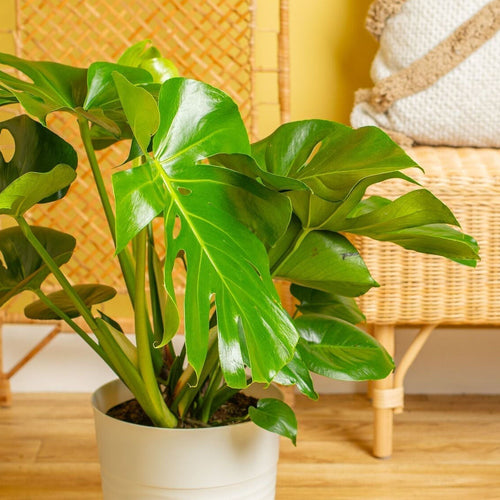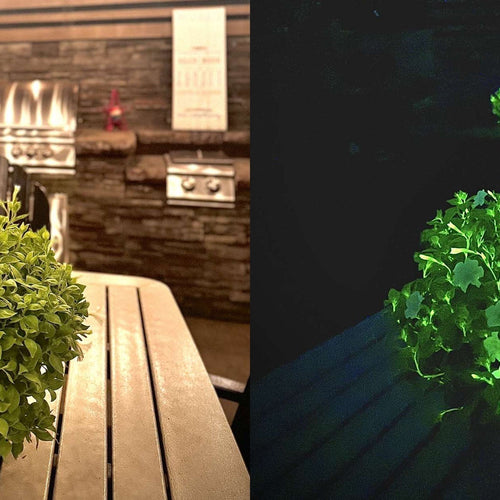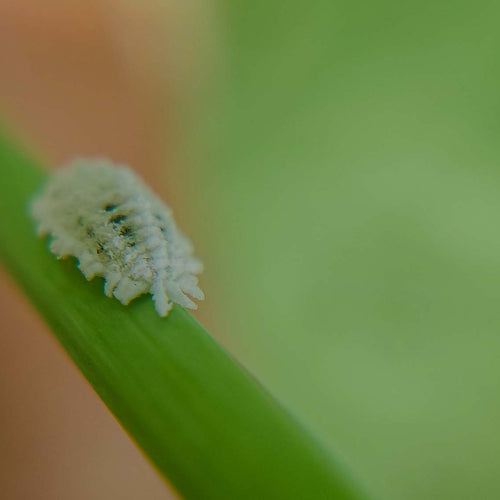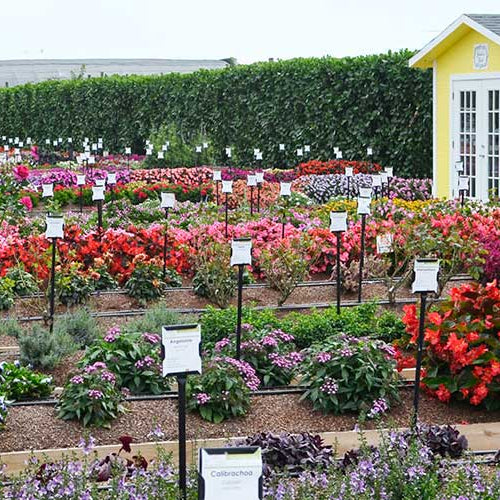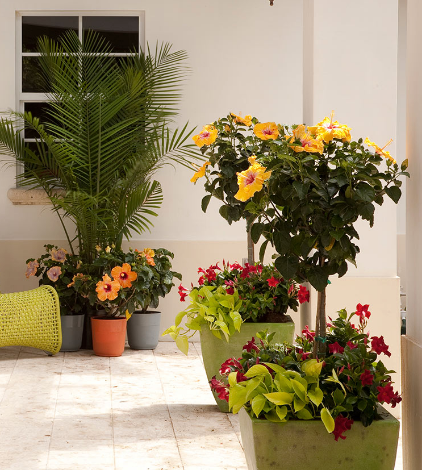
Nippon Daisy
Often called Montauk Daisy, Nippon Daisy is prized for its late-in-the-season explosion of perky, white flowers. This easy-care plant grows 24 to 36 inches tall, and thrives in full sun and well-drained soil. Both the leaves and flowers of Nippon Daisy are frost tolerant and will retain their color right up until a hard freeze. The nectar-rich blooms will also lure colorful butterflies to your garden. Nippon Daisy is deer-resistant, too. Zones 5-9

Goldenrod
Let the bright, yellow blooms of Goldenrod gild your late-season garden with color. Heat- and drought-tolerant, Goldenrod is an easy-care native that’s been given a modern makeover. Newer hybrids are a great choice for your garden because they’re more compact and produce more flowers than their roadside cousins. Hybrid Goldenrod grows 18 to 24 inches tall and is highly attractive to hungry bees and butterflies. By the way, it’s a myth that Goldenrod causes hay fever. Ragweed, which blooms at the same time as Goldenrod, is generally the sneeze-inducing culprit. Zones 3-9
In photo: Solidago 'Little Lemon'

Joe Pye Weed
Perennials don’t get much tougher than Joe Pye Weed. In fact, you can probably drive a truck over this rugged native and not phase it a bit. Joe Pye Weed is a big plant (although dwarf varieties that grow 3 feet tall are available) often reaching 6 to 7 feet tall, so give it plenty of room to stretch out. It loves rich, slightly moist soil and produces handsome burgundy-green foliage topped with large showy heads of whitish-purple flowers in the late summer and fall. Butterflies and bees love the nectar rich flowers. Joe Pye Weed can be a bit of a bully, so plant it where it won’t encroach on its neighbors. Zones 4-10
In photo: Eupatorium 'Baby Joe'
Discover more top plants to attract butterflies to your garden.

Helenium
For gorgeous fall color you can’t beat Helenium. Year after year, this super-easy native perennial produces masses of pretty, daisy-like flowers in shades of yellow, orange, red, and bi-color. These sun-loving plants grow 3 to 4 feet tall and look terrific even when rainfall is scarce. Occasionally called sneezeweed, Helenium does not cause hay fever. It just happens to bloom in the same season as ragweed so it often takes the blame. Helenium will also attract important pollinating insects to your garden. Deer, however, generally avoid the plant. Zones 3-8
In photo: Helenium 'Coppelia'

Oriental Lily
Enjoy color and fragrance in your fall garden with Oriental Lilies. These exotic-looking charmers grow 4 to 6 feet tall and produce magnificent stalks of huge, star-shape blooms. Colors include pink, rose, red, cream, white, yellow, and orange; most flowers are also generously splashed with darker stripes and spots. Oriental Lilies need a sunny to partially sunny spot with well-drained soil that has plenty of organic matter mixed in. It may take a year or two to form a big impressive clump, but these super plants are worth the wait. Zones 5-9
In photo: Lilium 'Farolito'

Chrysanthemum
When you think about fall color, Chrysanthemumsare probably the first plants that come to mind. That’s because these versatile perennials are available in an almost unlimited selection of colors, sizes, and flower forms that look amazing planted by themselves or mixed with other flowers. Use Chrysanthemums in containers or directly in the landscape. All they require is a sunny location and a drink whenever the surface of the soil begins to dry. In colder climates cover newly planted Chrysanthemums with a few inches of shredded leaves or compost after the foliage dies. This protects them during their first winter in the ground. Zones 4-10

Japanese Anemone
Borne on tall, elegant stems, the pink or white flowers of Japanese Anemone are a welcome treat in the late-summer garden. Growing 2 to 4 feet high, Japanese Anemone mingles well with other fall bloomers such as Asters and Chrysanthemums. The plants prefer full sun, but will also bloom in partial shade. They do best in rich, cool, organic soil so mulch the plants with shredded leaves or compost. Japanese Anemone spreads by underground runners, so keep an eye on your plants to be sure they aren’t crowding nearby perennials. Zones 4-8
In photo: Anemone 'Honorine Jobert'

Balloon Flower
Take your fall flower garden to new heights with Balloon Flower. Named for its eye-catching balloon-shape flower buds, balloon flower provides a burst of welcome color in the late-summer garden. An easy-care perennial, Balloon Flower, which also goes by its genus name Platycodon, develops quantities of dark blue, pink, or white flowers. The plants grow 12 to 20 inches tall and thrive in any sunny or partially sunny location. Balloon Flower also makes a wonderful cut flower. And, it’s deer resistant, too! Zones 3-8
In photo: Platycodon 'Sentimental Blue'

Sedum
If you’re a “plant it and forget it” style of gardener, you definitely need to put Sedumon your shopping list. These rugged plants are virtually indestructible and come in a wide variety of shapes, sizes, and colors. Sedums have fleshy foliage that makes them super drought tolerant. Just plant them in a sunny spot and stand back. Taller varieties, that can grow 24 to 36 inches tall, produce large flat heads of pink or red flowers through the late summer and fall. The nectar rich blooms also attract scores of bees, butterflies and other pollinators. Zones 3-8
In photo: Sedum 'Autumn Charm'
Have Questions?
Check out our Help Center for answers to commonly asked questions. If you don't see yours, you can easily email us to get the answers you're looking for!






